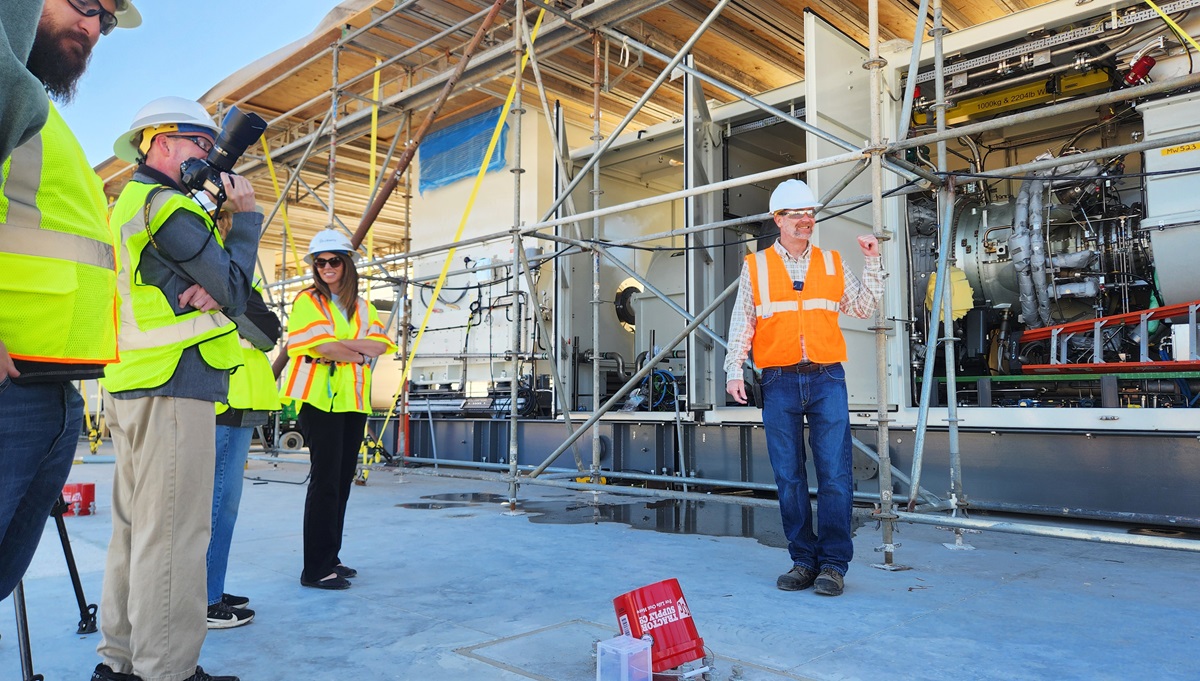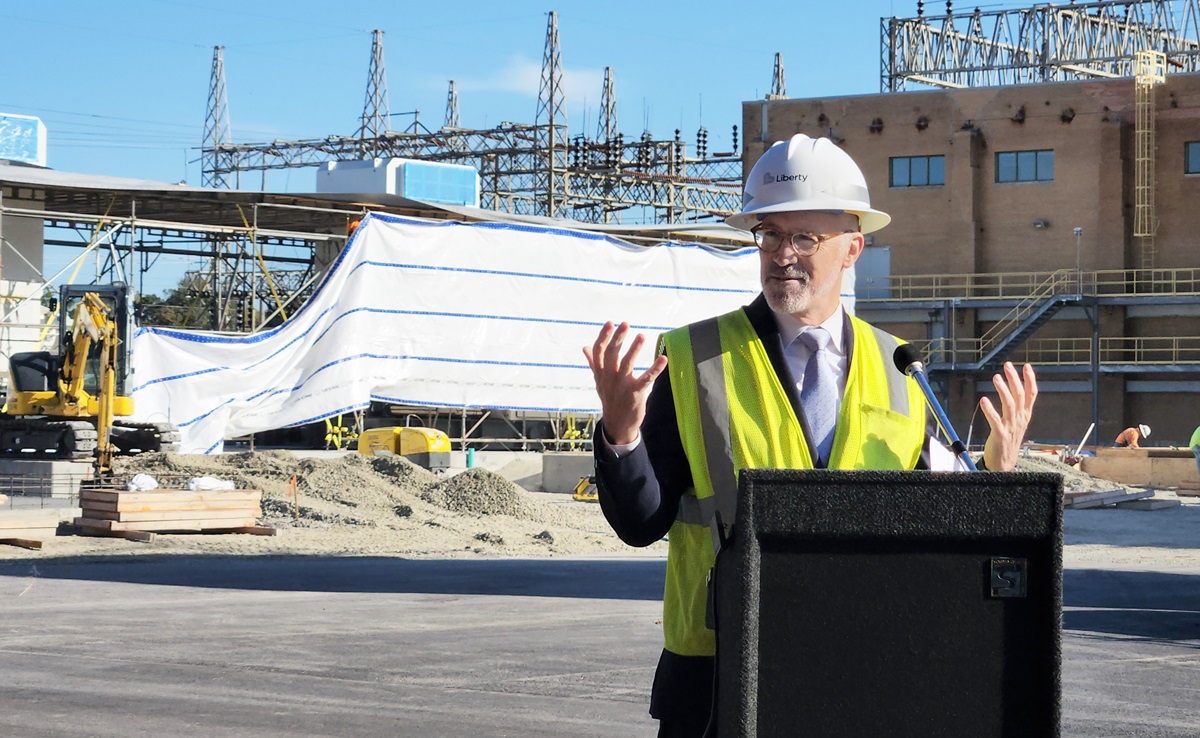
In the background, construction crews worked diligently on the installation of two new generation units, accompanied by the cacophony of sounds one would expect to hear on an active work site.
For those gathered at Liberty’s Riverton Power Plant on the morning of Thursday, Oct. 23, the sights and sounds combined to paint an exciting picture of progress.
The delivery and installation of two new Siemens SGT-400 industrial natural gas generation units marked a major milestone – two years in the making – in a project that will improve the plant’s efficiency, reliability and operational flexibility, benefitting customers in the Four State (Arkansas, Kansas, Missouri, and Oklahoma) electric service area.
It also reaffirms the vital importance of the plant in Riverton, Kansas, which has been central to regional electric service for nearly 120 years.
Meeting community needs through the decades
Justin Moll, Plant Director, offered some historical perspective on the power plant and how it has grown throughout the years.
The Lowell Dam was built in 1904 to help supply power to the local mining community; two years later, the plant purchased “Old Kate,” a steam generator that provided power for visitors to the 1904 World’s Fair in St. Louis, Missouri. Additional steam turbines and plant expansions followed in the coming decades.
“As electricity went from a luxury to a necessity and economic driver, the Riverton plant has been here every step of the way to meet the needs of our local communities,” said Moll.
Today, the plant is powered by Units 10, 11, and 12. The first two are the plant’s oldest units, simple cycle turbines that were manufactured in 1966 and purchased by then Empire District Electric Company in 1988. They are dual fuel, meaning they can operate on both natural gas and fuel oil.

Unit 12 was installed in 2007. The gas turbine was converted to a combined cycle unit with the addition of a steam turbine in 2016.
Building for the future
Shaen Rooney, Liberty’s Strategic Project Director, provided more details about the new generation units and the project timeline.
“Units 10 and 11 have served us well for decades,” he said. “But after more than half a century of regular use, they have aged and are no longer supported by the manufacturer, making any needed repairs challenging and time-consuming.”
Planning began in 2023, with the contracts for the major equipment signed in 2024. Earlier this year, crews from Cerris – contractor for the project – began installing the foundation and underground utilities to prepare for delivery of the new units, which came in early October.
Over the next few months, a building will go up around the generators.
“We’ll continue to work through the cold weather this winter to install equipment, piping, and electrical systems,” said Tom Banassi, Senior Vice President of Client Solutions for Cerris.
The main transformer, which will take energy from the generators and step it up to voltages needed for transmission, will arrive in 2026. The units are expected to be in service by August 2026.
The new generators are also dual fuel units capable of operating on liquid fuels during periods of high demand for natural gas, helping to support reliability.
“The new units are about 40 percent more efficient than the existing units,” said Rooney. “In cold weather, the fuel oil in our tank will last extra days, not just hours.”
They were built with the future in mind as well, with the ability to operate on a blend of hydrogen and natural gas as technology advances.
Modernizing to meet rising demands
Among the special guests in attendance for the milestone event were Kansas State Sen. Tim Shallenburger; Betsy Mense, President/CEO of the Joplin Area Chamber of Commerce; Amy Kauffman, Executive Director of MOKAN Partnership – a Missouri, Oklahoma, and Kansas economic development collaborative; and Cerris’ Banassi, joined by other company representatives.
Noel Black, Liberty’s Chief Regulatory and External Affairs Officer, took a moment during his closing remarks to thank all the local stakeholders and community leaders in attendance.
“Electricity represents 2 percent of the GDP in America … which is remarkable, I think, given that everything in the other 98 percent depends on it,” he said. “And for electricity to be done right, you have to have it in abundance.”

Black said the project is part of Liberty’s commitment to modernizing local generation to meet rising energy demand both now and in the years to come.
“We take that commitment to making energy more affordable and more reliable very seriously.”
To read more about the project and the historic Riverton Power Plant, click here.
